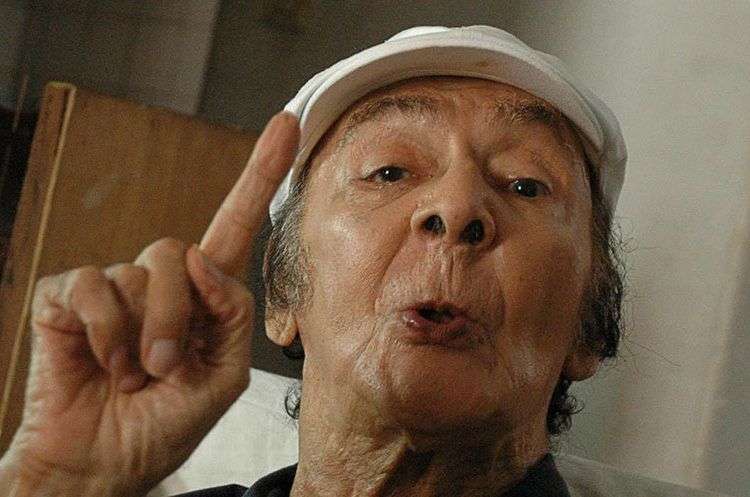I wish I could say who Luis Carbonell was… but not even him could. One day, one unique early morning, at the airport, he confessed to me: “I don’t know Luis Carbonell, I learn from him, he surprises me, I am still discovering him”.
I don’t aim to repeat the biography of this man born on July 26, 1923, in the streets of the eastern province of Santiago de Cuba. I was moved –I’m even more moved– by his statement: “I came from Santiago first, but then I was Cuban”. Before being consciously aware of the homeland, we are consciously aware of our little ground under the sun.
Let’s take a jump, the first one of many. After his home time was severely hit by a hurricane in October, 2012, he premiered a scene by actor and director Santiago Carnago. Help was needed in all sorts of ways. He was willing to pick up stones if necessary and so he told the highest authorities in the territory. That was about the size of his humbleness.
If I could choose a sample of stock I would take one of the anthological events in the national discography. Back in 1955, with the recording of Esther canta a dos, tres y cuatro voces, nothing was said about multitracks, and especially not about digitalization. It was a tribute to his friendship with Esther Borja. It demanded strict discipline and pinpoint accuracy. He had both, as well as her.
He undertook musical arrangements for that project, the assembling of voices, the piano (along with Numidia Vaillant) and the drafting of notes. A complete artist. Years after he took part in the formation of Cuarteto del Rey ―where Pablo Milanes debuted––; Los Bucaneros and Los Cañas. Many bands went to him for consultancy during the following decades.
Luis was born for teaching, though not for teaching law nor medicine as his mother would have wanted. He not only succeeded in this field, but was also able to send away a mountain of prejudices.
How did he manage to learn the extensive Elegia a Jesus Menendez by Nicolas Guillen? How to follow the Captain of Death? How to say Jesus / sugar cane / Manzanillo / army? I also asked him. “Studying” was never his only response. He must have noticed something in my face, some shadow, when he added: “It’s actually three things: study, study and study”.
He lived from poetry, something almost no one has ever done. But better than that he made us live with it. He took the most of every phrase and took every word to the limit. He undressed the poem from the outside in and then dressed it layer by layer as if he had never touched it.
Argentinean artist Pepe Biondi one day confessed: “You don’t recite poems, you draw verses, and you paint them. You are the watercolorist of Cuban poetry”.That name, along with the taste of the Caribbean, always accompanied him through the Caribbean, South America, the United States and Europe.
He shaped Lorca and Camín, Palés Matos and Eloy Blanco, Tallet and Ballagas. He made great poems and great authors, but he also gave heart to pieces that didn’t seem too much and made them succeed.
He insisted in saying he didn’t write poetry, he tried to prove it, but we all know he could play with words to the extent of taking us were he wanted and then… he would pull us off.
Just watch him drawing in the air, watch his voice make the miracle: Fulooooo. Look at that young boy wearing gloves and all, cheche, applauding, yelling, and saying his name, just as the Valdes boy.










